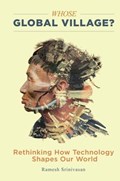This critical reassessment of digital proliferation calls for a new approach to technology that includes marginalized, non-western communities.
In the digital age, technology has shrunk the physical world into a “global village,” where we all seem to be connected as an online community. Yet while we think of platforms such as Twitter and Facebook as open and accessible to all, they are in fact commercial entities developed primarily by and for the Western world. Considering how new technologies increasingly shape labor, economics, and politics, these tools often reinforce the inequalities of globalization, rarely reflecting the perspectives of those at the bottom of the digital divide.
This book asks us to re-consider ‘whose global village’ we are shaping with the digital technology revolution. Sharing stories of collaboration with Native Americans in California and New Mexico, revolutionaries in Egypt, communities in rural India, and others across the world, Ramesh Srinivasan urges us to re-imagine what the Internet, mobile phones, or social media platforms may look like when considered from the perspective of diverse cultures. Collaboration with maginalized communities could pave the way for a people-first approach toward designing and working with new technology worldwide.

